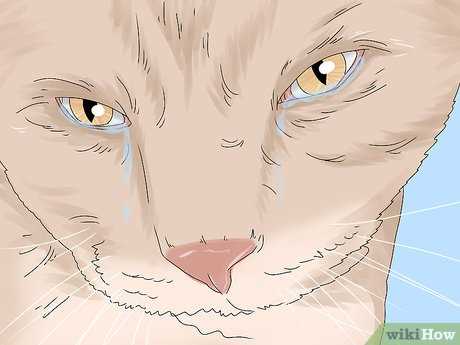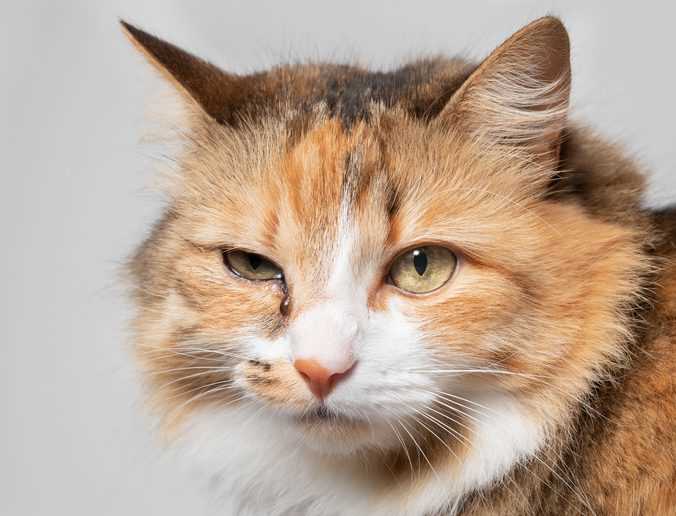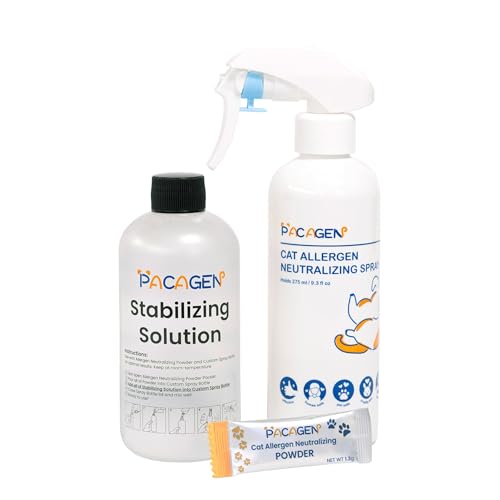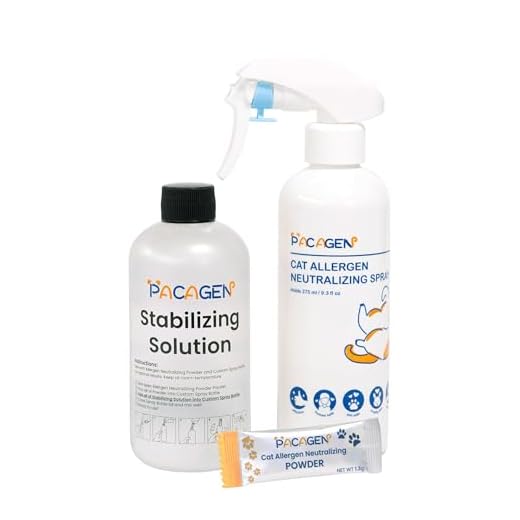



It’s crucial to pay attention to excessive moisture around my peepers, as it can indicate underlying issues. Common culprits include allergies, infections, or even blocked tear ducts. If you notice persistent watering, a trip to the vet is recommended to rule out any serious health concerns.
Environmental factors often play a significant role in my tear production. Dust, pollen, and strong odors can trigger a reaction, leading to watery discharge. Keeping my living area clean and free from irritants can help minimize this discomfort.
Occasionally, the design of my face can contribute to this phenomenon. Breeds with flat features may experience more frequent tearing due to the structure of their facial anatomy. If you’re a guardian of a similar breed, regular grooming and monitoring can assist in managing this issue effectively.
Additionally, certain medical conditions may lead to increased tear production. Infections, conjunctivitis, or even dental problems can manifest as watery eyes. Being observant of any accompanying symptoms is essential for early detection and treatment.
Understanding Tear Production in Felines

If you notice moisture accumulating around my peepers, it could be due to various factors. Allergies often trigger this response, where pollen, dust, or certain foods can lead to irritation. Keeping an eye on environmental changes helps identify potential allergens.
Anatomical issues, like blocked tear ducts, may also contribute. This condition prevents proper drainage, causing tears to overflow. Regular vet check-ups can detect such problems early, ensuring a quick solution.
Infections serve as another reason for excessive tearing. Conjunctivitis, for instance, can cause inflammation, leading to watery discharge. If you see redness or swelling, a visit to the vet is crucial for appropriate treatment.
Sometimes, underlying health concerns might manifest as increased tear production. Conditions like upper respiratory infections can result in nasal discharge that affects tear flow. Observing overall behavior and health can provide valuable insights.
Lastly, age plays a role. As I age, my body functions change, and my tear glands may produce more fluid. Regular monitoring and consultations with a vet ensure my comfort and well-being.
Common Causes of Tear Production in Felines

In my experience, several factors can lead to excessive tearing in furry companions. Allergies are a frequent culprit, often triggered by environmental elements like pollen, dust, or certain foods. These irritants can cause inflammation and a watery discharge.
Infections, such as conjunctivitis or upper respiratory issues, also play a significant role. These conditions may result in red, swollen tissues and increased tear production. If you notice any discharge along with other symptoms like sneezing or coughing, a vet visit is advisable.
Blocked Tear Ducts

Another reason for excessive tears is blocked tear ducts. This can occur due to various reasons like anatomical issues or foreign objects. Affected individuals may have tears that overflow, leading to unsightly wetness around the eyes.
Eye Injuries or Irritations
Injuries or irritations from scratches or foreign bodies can also cause tears. If your companion is pawing at their face or squinting, it could indicate discomfort. Regular check-ups can help catch these problems early on.
For those interested in unique breeds, explore how much are tuxedo cats worth for a deeper understanding of their charm and potential health considerations.
Identifying Symptoms and When to Seek Veterinary Help
If you notice excessive moisture around my face, it’s essential to observe other signs. Pay attention to the following symptoms:
- Redness or swelling of the eyelids
- Frequent rubbing of the face against objects
- Changes in behavior, such as increased irritability or lethargy
- Discharge that varies in color or consistency
- Squinting or keeping the eyes closed
Should any of these symptoms persist for more than a day or worsen, it’s time to consult a veterinarian. Early intervention can prevent more serious conditions.
In addition, if there are signs of pain, such as vocalizations or sensitivity to touch around the face, seeking help without delay is crucial. Always trust your instincts; if something feels off, it’s best to get a professional evaluation.
Regular check-ups can also help catch issues early, so consider scheduling routine appointments to maintain overall health, ensuring that everything is functioning as it should.
Home Remedies and Care Tips for Felines with Watery Discharge
Wipe the discharge gently with a clean, damp cloth to keep the fur around the facial area clean. Use warm water to avoid any irritation; avoid soaps or chemicals.
Maintain a clean environment. Regularly change bedding and vacuum to reduce allergens and irritants that could contribute to excess moisture.
Monitor diet. Ensure high-quality nutrition, as certain food allergies might lead to increased tear production. Consider hypoallergenic options if allergies are suspected.
Provide fresh water daily. Staying hydrated can help maintain overall health and potentially reduce tear issues.
Try adding omega-3 fatty acids to the diet. They can support eye health and may help reduce inflammation.
Consider using a humidifier in dry environments. This can help ease irritation caused by dry air, which could lead to watery discharge.
Observe for any additional symptoms. If other issues arise, such as redness or swelling, it might indicate a more serious condition requiring veterinary attention.
Regularly check for foreign objects in the eye. If something is lodged, it may cause excessive tearing; seek help if necessary.
It’s crucial to pay attention to excessive moisture around my peepers, as it can indicate underlying issues. Common culprits include allergies, infections, or even blocked tear ducts. If you notice persistent watering, a trip to the vet is recommended to rule out any serious health concerns.
Environmental factors often play a significant role in my tear production. Dust, pollen, and strong odors can trigger a reaction, leading to watery discharge. Keeping my living area clean and free from irritants can help minimize this discomfort.
Occasionally, the design of my face can contribute to this phenomenon. Breeds with flat features may experience more frequent tearing due to the structure of their facial anatomy. If you’re a guardian of a similar breed, regular grooming and monitoring can assist in managing this issue effectively.
Additionally, certain medical conditions may lead to increased tear production. Infections, conjunctivitis, or even dental problems can manifest as watery eyes. Being observant of any accompanying symptoms is essential for early detection and treatment.
Understanding Tear Production in Felines

If you notice moisture accumulating around my peepers, it could be due to various factors. Allergies often trigger this response, where pollen, dust, or certain foods can lead to irritation. Keeping an eye on environmental changes helps identify potential allergens.
Anatomical issues, like blocked tear ducts, may also contribute. This condition prevents proper drainage, causing tears to overflow. Regular vet check-ups can detect such problems early, ensuring a quick solution.
Infections serve as another reason for excessive tearing. Conjunctivitis, for instance, can cause inflammation, leading to watery discharge. If you see redness or swelling, a visit to the vet is crucial for appropriate treatment.
Sometimes, underlying health concerns might manifest as increased tear production. Conditions like upper respiratory infections can result in nasal discharge that affects tear flow. Observing overall behavior and health can provide valuable insights.
Lastly, age plays a role. As I age, my body functions change, and my tear glands may produce more fluid. Regular monitoring and consultations with a vet ensure my comfort and well-being.
Common Causes of Tear Production in Felines

In my experience, several factors can lead to excessive tearing in furry companions. Allergies are a frequent culprit, often triggered by environmental elements like pollen, dust, or certain foods. These irritants can cause inflammation and a watery discharge.
Infections, such as conjunctivitis or upper respiratory issues, also play a significant role. These conditions may result in red, swollen tissues and increased tear production. If you notice any discharge along with other symptoms like sneezing or coughing, a vet visit is advisable.
Blocked Tear Ducts

Another reason for excessive tears is blocked tear ducts. This can occur due to various reasons like anatomical issues or foreign objects. Affected individuals may have tears that overflow, leading to unsightly wetness around the eyes.
Eye Injuries or Irritations
Injuries or irritations from scratches or foreign bodies can also cause tears. If your companion is pawing at their face or squinting, it could indicate discomfort. Regular check-ups can help catch these problems early on.
For those interested in unique breeds, explore how much are tuxedo cats worth for a deeper understanding of their charm and potential health considerations.
Identifying Symptoms and When to Seek Veterinary Help
If you notice excessive moisture around my face, it’s essential to observe other signs. Pay attention to the following symptoms:
- Redness or swelling of the eyelids
- Frequent rubbing of the face against objects
- Changes in behavior, such as increased irritability or lethargy
- Discharge that varies in color or consistency
- Squinting or keeping the eyes closed
Should any of these symptoms persist for more than a day or worsen, it’s time to consult a veterinarian. Early intervention can prevent more serious conditions.
In addition, if there are signs of pain, such as vocalizations or sensitivity to touch around the face, seeking help without delay is crucial. Always trust your instincts; if something feels off, it’s best to get a professional evaluation.
Regular check-ups can also help catch issues early, so consider scheduling routine appointments to maintain overall health, ensuring that everything is functioning as it should.
Home Remedies and Care Tips for Felines with Watery Discharge
Wipe the discharge gently with a clean, damp cloth to keep the fur around the facial area clean. Use warm water to avoid any irritation; avoid soaps or chemicals.
Maintain a clean environment. Regularly change bedding and vacuum to reduce allergens and irritants that could contribute to excess moisture.
Monitor diet. Ensure high-quality nutrition, as certain food allergies might lead to increased tear production. Consider hypoallergenic options if allergies are suspected.
Provide fresh water daily. Staying hydrated can help maintain overall health and potentially reduce tear issues.
Try adding omega-3 fatty acids to the diet. They can support eye health and may help reduce inflammation.
Consider using a humidifier in dry environments. This can help ease irritation caused by dry air, which could lead to watery discharge.
Observe for any additional symptoms. If other issues arise, such as redness or swelling, it might indicate a more serious condition requiring veterinary attention.
Regularly check for foreign objects in the eye. If something is lodged, it may cause excessive tearing; seek help if necessary.
It’s crucial to pay attention to excessive moisture around my peepers, as it can indicate underlying issues. Common culprits include allergies, infections, or even blocked tear ducts. If you notice persistent watering, a trip to the vet is recommended to rule out any serious health concerns.
Environmental factors often play a significant role in my tear production. Dust, pollen, and strong odors can trigger a reaction, leading to watery discharge. Keeping my living area clean and free from irritants can help minimize this discomfort.
Occasionally, the design of my face can contribute to this phenomenon. Breeds with flat features may experience more frequent tearing due to the structure of their facial anatomy. If you’re a guardian of a similar breed, regular grooming and monitoring can assist in managing this issue effectively.
Additionally, certain medical conditions may lead to increased tear production. Infections, conjunctivitis, or even dental problems can manifest as watery eyes. Being observant of any accompanying symptoms is essential for early detection and treatment.
Understanding Tear Production in Felines

If you notice moisture accumulating around my peepers, it could be due to various factors. Allergies often trigger this response, where pollen, dust, or certain foods can lead to irritation. Keeping an eye on environmental changes helps identify potential allergens.
Anatomical issues, like blocked tear ducts, may also contribute. This condition prevents proper drainage, causing tears to overflow. Regular vet check-ups can detect such problems early, ensuring a quick solution.
Infections serve as another reason for excessive tearing. Conjunctivitis, for instance, can cause inflammation, leading to watery discharge. If you see redness or swelling, a visit to the vet is crucial for appropriate treatment.
Sometimes, underlying health concerns might manifest as increased tear production. Conditions like upper respiratory infections can result in nasal discharge that affects tear flow. Observing overall behavior and health can provide valuable insights.
Lastly, age plays a role. As I age, my body functions change, and my tear glands may produce more fluid. Regular monitoring and consultations with a vet ensure my comfort and well-being.
Common Causes of Tear Production in Felines

In my experience, several factors can lead to excessive tearing in furry companions. Allergies are a frequent culprit, often triggered by environmental elements like pollen, dust, or certain foods. These irritants can cause inflammation and a watery discharge.
Infections, such as conjunctivitis or upper respiratory issues, also play a significant role. These conditions may result in red, swollen tissues and increased tear production. If you notice any discharge along with other symptoms like sneezing or coughing, a vet visit is advisable.
Blocked Tear Ducts

Another reason for excessive tears is blocked tear ducts. This can occur due to various reasons like anatomical issues or foreign objects. Affected individuals may have tears that overflow, leading to unsightly wetness around the eyes.
Eye Injuries or Irritations
Injuries or irritations from scratches or foreign bodies can also cause tears. If your companion is pawing at their face or squinting, it could indicate discomfort. Regular check-ups can help catch these problems early on.
For those interested in unique breeds, explore how much are tuxedo cats worth for a deeper understanding of their charm and potential health considerations.
Identifying Symptoms and When to Seek Veterinary Help
If you notice excessive moisture around my face, it’s essential to observe other signs. Pay attention to the following symptoms:
- Redness or swelling of the eyelids
- Frequent rubbing of the face against objects
- Changes in behavior, such as increased irritability or lethargy
- Discharge that varies in color or consistency
- Squinting or keeping the eyes closed
Should any of these symptoms persist for more than a day or worsen, it’s time to consult a veterinarian. Early intervention can prevent more serious conditions.
In addition, if there are signs of pain, such as vocalizations or sensitivity to touch around the face, seeking help without delay is crucial. Always trust your instincts; if something feels off, it’s best to get a professional evaluation.
Regular check-ups can also help catch issues early, so consider scheduling routine appointments to maintain overall health, ensuring that everything is functioning as it should.
Home Remedies and Care Tips for Felines with Watery Discharge
Wipe the discharge gently with a clean, damp cloth to keep the fur around the facial area clean. Use warm water to avoid any irritation; avoid soaps or chemicals.
Maintain a clean environment. Regularly change bedding and vacuum to reduce allergens and irritants that could contribute to excess moisture.
Monitor diet. Ensure high-quality nutrition, as certain food allergies might lead to increased tear production. Consider hypoallergenic options if allergies are suspected.
Provide fresh water daily. Staying hydrated can help maintain overall health and potentially reduce tear issues.
Try adding omega-3 fatty acids to the diet. They can support eye health and may help reduce inflammation.
Consider using a humidifier in dry environments. This can help ease irritation caused by dry air, which could lead to watery discharge.
Observe for any additional symptoms. If other issues arise, such as redness or swelling, it might indicate a more serious condition requiring veterinary attention.
Regularly check for foreign objects in the eye. If something is lodged, it may cause excessive tearing; seek help if necessary.












